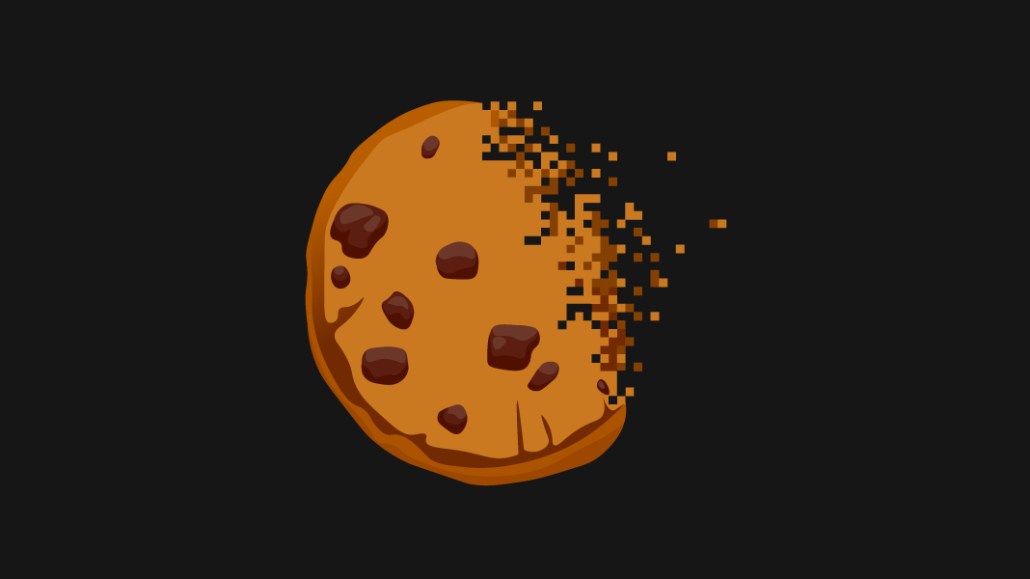How buyers and advertisers are planning for the end of the third-party cookie

Advertiser reactions to Google’s plan to phase out support for third-party cookie tracking tools within the next two years in its Chrome browser are mixed, according to media buyers at Digiday’s Media Buying Summit in Palm Springs, California this week.
“It’s all over the place,” said Kevin Van Valkenburgh, chief connection officer at The Tombras Group. “Truthfully, I don’t think anybody knows what the impact will be until that day gets here but everyone is an expert. [No reaction] is in the middle. It’s either, ‘This is the end of the world as we know it, we’re going back 15 years and we’ll have to start buying TV again’ or ‘It’s really nothing and somebody will have a workaround.’”
In January, Google made clear its intention to stop supporting third-party cookie tracking tools. The ripple effects of that announcement have been more substantial than Safari or Firefox as Chrome is the most popular browser with a 67% market share as of January 2020, per Net Marketshare data. The limited shelf life of the third-party cookie tracker has publishers worried and tech companies in limbo. Advertisers, meanwhile, are generally taking a wait-and-see approach as there is no industry standard for a replacement to the cookie and it’s unclear exactly what Google will do. Some media buyers say that their clients are leaning more into the walled gardens, where they can use first-party data, or that they are leaning more into contextual targeting. Others say their clients are looking into more brand-building campaigns and top of the funnel advertising as the effectiveness of mid-funnel and lower-funnel advertising becomes trickier to track.
“We’ve been talking to clients about how data is not going away, it’s just changing,” said a media buyer for a digital agency. “That’s the message that’s been resonating a little bit more. Still, we’re leaning into walled gardens. If you look at our strategic partners they’re the Googles, Verizons, the Amazons, people with differentiated data and inventory capabilities that have holdings on multiple areas so those targeting capabilities aren’t diminished.”
Leaning into the walled gardens will likely be common for advertisers, especially those that don’t have access to their own first-party data. Buyers expect the death of the cookie to impact consumer packaged goods and household goods companies, essentially companies without direct fulfillment to be affected more seriously than others. Without being able to gather first-party data via e-commerce, those companies will be at a disadvantage than those with a deep well of first-party data. From those companies, there will likely be a push for more brand building and brand awareness campaigns, according to Becky Prindable, vp and group director at Havas Media, adding that the agency has been helping clients do audits of their own data to figure out what they have access to outside of the companies curbing access to cookie tracking and that some clients have been building their own “clean rooms.”
“Almost certainly we will see a bigger push towards brand building, although it will likely be at the expense of targeting within the top and middle of the funnel, rather than super-targeted bottom of the funnel campaigns given the ability for targeting immediately following interactions on site,” wrote Simon Poulton, vice president of digital intelligence at WPromote, in an email. “Additionally, we are seeing a greater push towards collecting user information to re-engage them later. The writing is likely on the wall for almost all targeted prospecting media though, and the future will very much be focused on contextual targeting.”
Overall, buyers believe that contextual targeting will be on the rise. “Most clients are aware of this topic and have been for some time with the updates to Safari and Firefox cookie tracking,” said a media buyer at a digital agency. “There seems to be a heavier shift into contextual targeting with the cookie ‘apocalypse’ and moving away from (or never venturing into) one-to-one messaging and a common theme amongst advertisers in the space.”
Still, even as clients lean into contextual targeting or walled gardens, there’s a sense that much is still unknown when it comes to how advertisers will deal with Google’s changes and the impending the death of the cookie. “There is some unease with most clients given the lack of clarity around future solutions and what will be possible,” wrote Poulton. “Given we have a two-year timeline provided by Google, it will be a bit of a waiting game.”
“Not enough is being done because the industry hasn’t decided what will replace the cookie,” said Nick Venezia, managing director at Social Outlier. “We’re being forced to innovate and no one wants to innovate. Everyone is waiting to see what Google does.”
More in Marketing

With the rise of the chief AI officer, it’s time to examine ‘czar’ culture
Even if it’s a familiar pattern — hot new thing, new C-Suite exec to tackle said thing, a few years go by and that C-Suite position no longer exists as everyone is now doing said thing (or it was a fad that has since faded away) — does it make sense for businesses to continue to appoint new czars with every new trend?

Why Cava’s bid for brand awareness means prioritizing streaming ads
Fast-casual restaurant chain Cava has been in growth mode over the past year and is leaning into streaming ads in an effort to boost brand awareness.

A history of middle manager stress: The Return podcast, season 3, episode 1
In episode one, McKinsey partner Emily Field tells us more about why middle management is critically important to the workforce.







